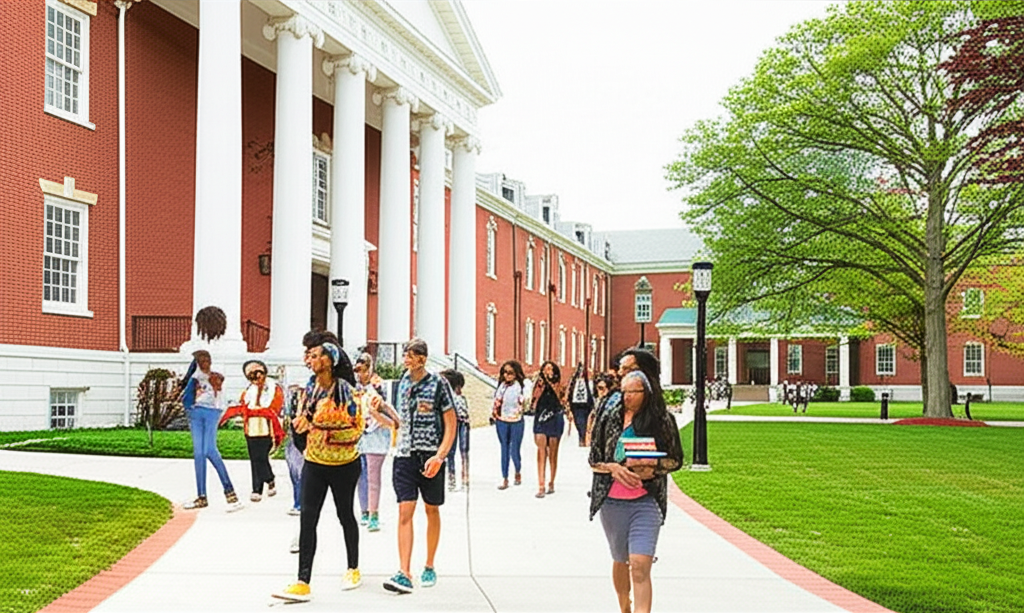Critical Context
This analysis examines institutional challenges facing HBCUs while recognizing their vital role in American higher education and their significant contributions to Black student success.
The Current Landscape
Historically Black Colleges and Universities face a complex set of challenges that threaten their traditional role as engines of opportunity for Black students. While these institutions have produced many of America's most prominent Black leaders, they now confront financial pressures and enrollment declines that raise serious questions about their future.
HBCU Enrollment Trends (2010-2023)
| Year | Total HBCU Enrollment | % Change | % of Total Black College Students |
|---|---|---|---|
| 2010 | 326,614 | - | 17.8% |
| 2015 | 292,083 | -10.6% | 16.2% |
| 2020 | 274,881 | -5.9% | 15.1% |
| 2023 | 267,512 | -2.7% | 14.3% |
Data from National Center for Education Statistics and United Negro College Fund
Financial Pressures
Many HBCUs operate with significantly smaller endowments than their predominantly white counterparts, making them more vulnerable to enrollment fluctuations and economic downturns.
Key Financial Challenges
- **Limited endowments:** Average HBCU endowment is $15 million vs. $700 million for all colleges
- **Tuition dependence:** Heavy reliance on tuition revenue due to smaller endowments
- **Deferred maintenance:** Aging infrastructure requiring significant capital investment
- **Federal funding uncertainty:** Dependence on federal programs subject to political changes
- **Alumni giving gaps:** Lower alumni giving rates compared to other institutions
"HBCUs have always done more with less, but the financial pressures today are unlike anything we've seen before. We need sustainable solutions, not just short-term fixes."
— Dr. Michael Lomax, President and CEO of United Negro College Fund
Enrollment Challenges
Several factors contribute to declining HBCU enrollment, including increased competition from predominantly white institutions actively recruiting Black students.
Competition Factor
PWIs (Predominantly White Institutions) now enroll 85.7% of Black college students, up from 82.2% in 2010, as they've increased diversity recruitment efforts.
Success Stories and Innovations
Despite challenges, many HBCUs are implementing innovative strategies to ensure their continued relevance and financial stability.
HBCU Innovation Strategies
- **Online program expansion:** Developing robust distance learning capabilities
- **Corporate partnerships:** Building relationships with major employers for internships and hiring
- **Research growth:** Increasing research capacity and federal research funding
- **Alumni engagement:** Strengthening alumni networks and giving programs
- **Niche specialization:** Developing unique programs that differentiate from competitors
The Value Proposition
Research consistently shows that HBCUs provide unique benefits for Black students that extend beyond graduation rates and career outcomes.
HBCU vs. PWI Outcomes for Black Students
| Metric | HBCUs | PWIs | Difference |
|---|---|---|---|
| 6-year graduation rate | 42% | 45% | -3% |
| STEM degree completion | 28% | 18% | +10% |
| Graduate school enrollment | 35% | 28% | +7% |
| Leadership positions post-grad | 31% | 22% | +9% |
| Alumni satisfaction | 78% | 65% | +13% |
Data compiled from multiple institutional research studies
"HBCUs create an environment where Black students see themselves reflected in leadership, faculty, and student body. That representation matters for academic and personal development."
— Dr. Shaun Harper, Professor of Management and Organization at USC Marshall School
Federal and State Support
Recent federal investments, including the $5.8 billion in HBCU funding through various programs, provide some optimism for the sector's future.
Recent Federal Investment
The Biden administration has committed over $7 billion to HBCUs through various programs, representing the largest federal investment in these institutions' history.
Looking Forward
The future of HBCUs depends on their ability to adapt while maintaining their unique mission and culture. Success will require strategic planning, increased funding, and continued demonstration of their value proposition.
Strategies for HBCU Sustainability
- Diversify revenue streams beyond tuition dependence
- Strengthen alumni engagement and giving programs
- Develop distinctive academic programs and research niches
- Build strategic partnerships with corporations and other institutions
- Invest in infrastructure and technology modernization
- Enhance marketing and recruitment efforts
